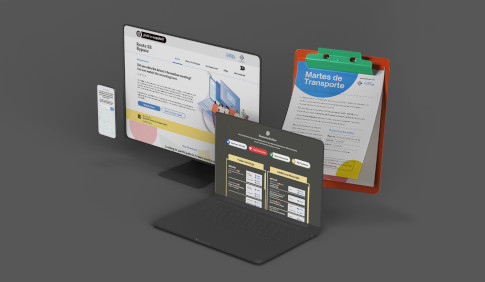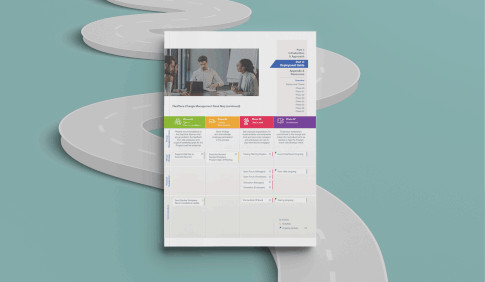Full disclosure — I’m not a sports guy. Don’t get me wrong, I play sports and lots of them. I just ended my fast-pitch baseball career last year, after all. However, Bud Light would never cast me in their chest-bumping-bowl-of-Utz-Party-Mix-spilling Sunday afternoon commercials. I just can’t get fired up about it.
That said, Super Bowl LI on Sunday, February 7th, 2017, was one of the most amazing performances of any game, show, or event I have ever seen, specifically the fourth quarter.
Background for those of you who didn’t see the game, here’s a quick headline. Tom Brady is quarterback for the New England Patriots. Many consider him to be the best quarterback of all time. Prior to Super Bowl LI, he was tied with other greats for most Super Bowl wins at four. If he won, he’d be solely on top with five.
The Patriots (the Pats, as they’re known) were playing the Atlanta Falcons, led by quarterback Matt Ryan. The Falcons were considered the underdog by a significant margin. The Pats are a dominant team, who are known to roll over their opponents, so everyone thought they’d make easy work of the Falcons.
It’s also important to note the nation’s sentiment surrounding the two teams. Tom Brady used to be the nation’s quarterback, however after a scandal and the fact, well frankly, he’s just won too many times, he’s too good looking, and he’s married to a supermodel, many people in the country were rooting for the Falcons, but not really expecting them to win.
Falcons fans couldn’t have been more surprised by how the game started. Matt Ryan came out of the gate firing on all cylinders. He surgically eviscerated the Pat’s defense, making them look like they had never made it out of Peewee football. Tom Brady felt the pressure Ryan was putting on him, and the Pat’s offense struggled to do just about anything.
For two quarters the Falcons dominated the game, controlling the clock and possession of the ball. After 30 minutes of gameplay the score was Atlanta 21, New England 3. In the history of the Super Bowl, no team had ever come back from a deficit so great and won (previous record was a 10 point comeback).
Then halftime came. Lady Gaga was great and the drones blew my mind, but that’s not the point.
Something happened at halftime in the Pat’s locker room. I can’t say for certain what it was, however there was a distinct shift. The Pats came out a different team.
Here’s where the learning starts.
- Generate rhythm (the source of momentum) – Brady started with things he knew would work. He found his favorite receivers on their favorite routes. Over and over again, they hit completions, trotted to the line of scrimmage, and did it again. They began to generate a sense of momentum, and more importantly, rhythm. The great thing about rhythm, distinct from momentum, is it helps you perform both consciously and subconsciously. You don’t have to think about rhythm once you are in it. In fact, you only think about rhythm when you are out of it. People talk about rhythm when they are talking about being “in the zone.” The best way to generate rhythm is to do what works, over and over again. At The Clearing, we call those “quick wins.”
- Meet the circumstance where it is at –Brady didn’t try to force anything in the second half of the game. He threw long when it was time to throw long, he ran the ball when he had to run. It was as if everything the Falcons’ defense did, he wanted them to do. If we’re going to get really zen about it, he chose everything about the game and resisted nothing. In doing so, and in keeping with our vibration theme, he was taking maximum resonant actions every opportunity he could. The added benefit of resonance is it spreads, like the wave of a vibration, and soon the entire team fell into the rhythm.
- Generate outcomes independent of your circumstances –The first half for Brady was atrocious, most of the country was rooting against him and no team had ever made a comeback like the one he was facing in the history of the Super Bowl. To the ordinary person that’s enough to say, “well we gave it the ol’ college try!” and go home. Brady did not do that. He separated his circumstances from his perspective of the future. This is reminiscent of my time in Econ class talking about sunk costs and the classic grocery line example. If you’ve been standing in line for 30 minutes and you see another line open up, what do you do? Well, if the new line would be a shorter wait than the one you are standing in now, you move! Some people argue, “But I’ve already been waiting for so long in this one.” The fact of the matter is, the time spent in line is a sunk cost, meaning you spent it and you can’t get it back, so there’s no point in letting it determine your future. Brady recognized the first half of the game was a sunk cost. In fact, you could see it, play-by-play, everything became a sunk cost to him. He would throw the ball, and as soon as it left his hand, he moved on. It was so visible the guy I was sitting next to at a party said, “He’s in the zone. He just became unstoppable.”
If you didn’t watch and it’s already not apparent, Brady and the Pats came back to tie the game 28-28 with seconds to go in the fourth quarter, sending it to the first overtime in Super Bowl history. The Pats won the coin toss, elected to receive the opening kick in overtime, and marched down the field to win.
While neither team was my team (go Skins?), I couldn’t help but appreciate the sportsmanship, the skill, and the peak performance exhibited by both teams. It was a great game, and one that will be talked about for a long, long, long time.
So, Tom, here’s to you and your win. I can’t say I love you. However, I am in awe of your ability to perform, no matter the circumstances. Congrats.
Leading From the Middle teaches you how to improve the system and show the Man that Millennials know how to get stuff done. Gain new perspectives on leadership, plot the course, and make an impact, even if your title equates to something along the lines of “assistant to the assistant.” Be forewarned — if you take on Leading From the Middle, there’s no such thing as, “above my paygrade.” Written by a Millennial, for Millennials, but in no way, shape, or form limited to Millennials.





